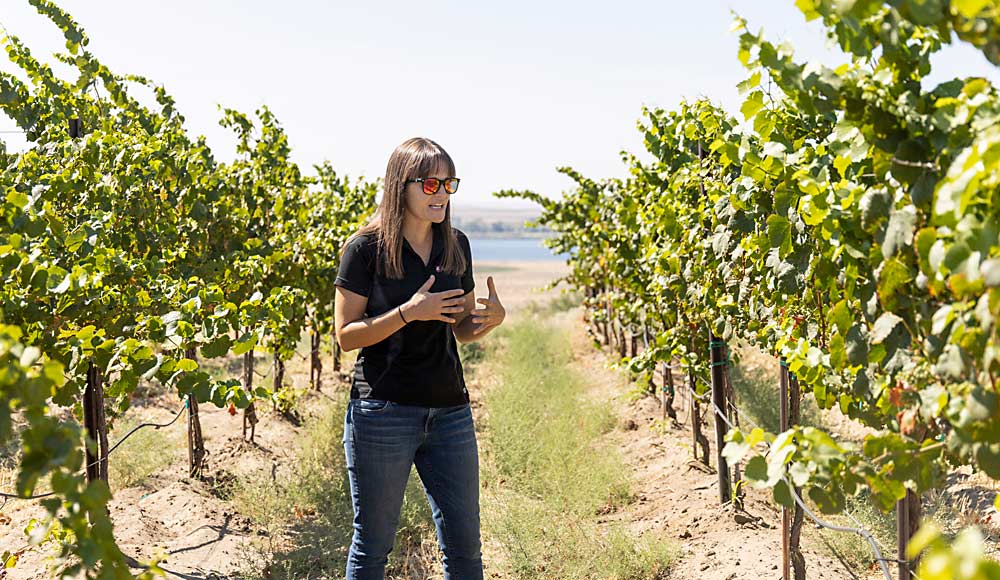

The end goal of nematode research currently underway in Washington state is to find a sustainable approach for long-term nematode management to keep vineyards healthy and productive. This research supports the Washington wine industry’s new certification program for sustainability, but also reflects the reality that there are few silver bullets for chemical control of any pest. Findings from earlier phases of the nematode research indicate that several tactics will be needed to keep the soilborne pests in check.
Plant parasitic nematodes are threadlike, round worms that feed on plant roots and threaten the long-term viability of Washington vineyards. Nematodes are ubiquitous in agricultural soils and affect many crops. In the early years of the Washington wine industry, grapes were planted on virgin land, and nematodes caused few problems. But as the industry matures and vineyards are replanted or follow other crops, nematodes can cause acute vine decline within a few years of replanting or chronic loss of vigor and yield in mature vineyards from years of nematode population buildup. The key species of concern in Washington are dagger and root-knot nematodes. Control after planting is very difficult because nematodes spend their lives underground, inside or near the roots.
Input wanted at research review
Washington state wineries and wine grape growers are invited to participate virtually during the Washington State Wine Commission’s annual research review February 22–23. Industry members will be asked for input on the proposals seeking grant funding through the wine research programs in Washington.
The meeting provides scientists a forum to share updates for ongoing projects and pitch new proposals to the Wine Research Advisory Committee, a subcommittee of the Washington State Wine Commission that serves as the scientific review arm for the industry. The committee will use the industry feedback when it makes recommendations for approval of research funding by the Washington State Wine Commission board of directors.
Register for the virtual research review at: washingtonwine.zoom.us/webinar/register/WN_cAgMQc0uS4eiO-OMI4drUw.
Tiny pest, big impact
More than seven years ago, with support from the Washington State Wine Commission, a team of Washington State University and U.S. Department of Agriculture scientists began a multipronged, 10-year research project to both understand the damage potential of plant-parasitic nematodes and find tools to help wine grape growers deal with these root-feeding pests. Lead investigators of the project are Michelle Moyer, WSU associate professor and extension viticulture specialist, and Inga Zasada, plant pathologist at the U.S. Department of Agriculture’s Horticultural Crops Research Unit in Corvallis, Oregon.
The research has potential for huge return on investment. With nearly 60,000 acres of wine grapes in the state and replanting costs around $20,000 per acre, millions of dollars will be spent in the coming years to keep vineyards productive. At stake is an estimated $44 million of annual replanting costs, assuming a 3 percent replanting schedule.
While many rootstocks aren’t truly resistant to dagger and root-knot nematodes, because they allow a slow buildup of nematode populations, the four in this study do appear to be tolerant. The improved vine vigor observed thus far is expected to become more pronounced as the study continues. Rootstocks have an added benefit of helping growers manage phylloxera, another pest that feeds on grapevine roots and was recently detected throughout Washington wine growing regions.
Sustainable tactics
The research team’s current focus is to find sustainable strategies for long-term nematode management. After demonstrating that the benefits of preplant fumigation are short-lived and that rootstocks are tolerant but not resistant to nematodes, Moyer, Zasada and WSU graduate student Bernadette Gagnier are now searching for nonchemical tools to help growers reduce nematodes before vineyard planting and keep them suppressed after planting.
In 2020, Gagnier initiated two trials to study the use of preplant and postplant cover crops to trap or trick northern root-knot nematodes.
The first trial uses litchi tomato plants (Solanum sisymbriifolium) to trap northern root-knot nematodes, inspired by potato growers’ use of it as a trap crop. The litchi plant triggers nematode eggs to hatch and invade the plant, but they are then unable to reproduce on it. Because the plant induces egg hatching, this cover crop is best used in the preplant stage of vineyard development — otherwise, hatched nematodes would find their way to grapevine roots.
The litchi trial is being conducted in a commercial vineyard in Mattawa where vines were recently removed. It studies six treatments: unmowed and mowed fallow plots (control); litchi plants grown for one year, mowed and unmowed; and litchi plants grown for two years, mowed and unmowed. The comparison of mowed to unmowed litchi plants is designed to learn if root branching from mowing further reduces northern root-knot nematode populations.
Preliminary results from the litchi trial show reduction of northern root-knot populations relative to doing nothing. More results will be shared in the coming year.
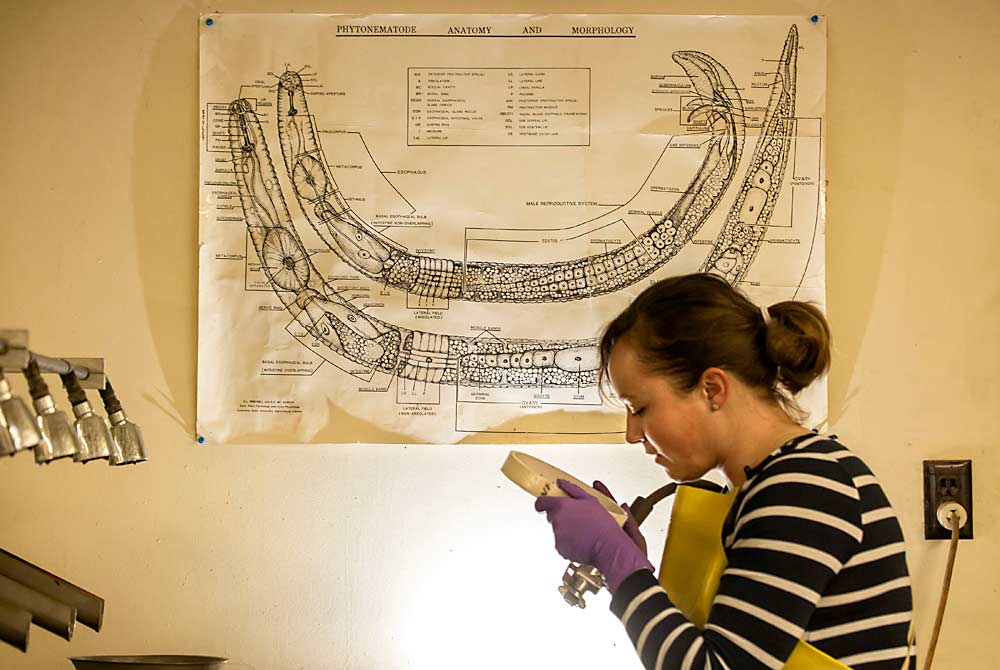
The second trial evaluates four cover crop treatments for effectiveness in reducing northern root-knot nematodes: white clover; oilseed radish; mustard; and an unseeded, fallow control. The cover crops were selected for the following reasons:
—White Dutch clover’s root system doesn’t accommodate nematodes, so the nematodes could die out in the soil before replanting begins.
—“Dracula” oilseed radish’s ancillary roots are attractive to nematodes, but once a feeding site is established, the surrounding root cells die and lead to nematode starvation.
—Pacific Gold mustard and Dracula oilseed radishes both contain glucosinolate, a compound toxic to northern root-knot nematodes. Glucosinolate exuded from roots and foliage, when incorporated into the soil, could reduce populations.
In this trial, the idea is that these postplant cover crops will work to suppress nematode population buildup. To build up nematode populations in the trial site, Roma tomato plants, which are susceptible to nematodes, were inoculated with northern root-knot nematode eggs and then planted in small plots in the field. This allowed for a natural buildup of nematodes over the summer. The Roma tomato plants were later destructively harvested above ground, leaving the roots intact.
Cover crops were then seeded into those plots in the fall and allowed to grow over the winter. In the spring, the mustard and radish cover crops were worked into the soil, but the control plots and clover plots were untouched. Soil samples were collected to monitor nematode population changes from fall to fall. Early results showed that plots seeded to Dracula oilseed radish the previous fall had about four times fewer root-knot nematodes than plots without any cover crop.
Grower trials
Although most wine grape vineyards in Washington are planted on their own roots, there is heightened grower interest in rootstocks due to concerns about both phylloxera and nematodes. Long-term rootstock trials are time-consuming, expensive and tend to be site- and management-specific. Thus, Inland Desert Nursery of Benton City has collaborated with Moyer to establish a rootstock demonstration site to help show growers how to set up their own rootstock trials. The demonstration project is funded through the Western Sustainable Agriculture Research and Education program and features five rootstocks and an own-rooted variety.
The nematode research team has made great progress on this long-term project that now integrates multiple management strategies of resistant rootstocks, cultural tactics and conventional approaches. As we enter the project’s final years, research outcomes will be shared at workshops, field days and webinars. We’re optimistic the project will provide sustainable options to help growers minimize damage from these tiny pests that can erode a vineyard’s long-term health and viability.
Past nematode research reports are posted in the research library on the Washington State Wine Commission’s website at: washingtonwine.org/additional-resources. Nematode research is funded by WSU, Auction of Washington Wines, all Washington state wine grape growers and wineries through the Washington State Wine Commission, the USDA Agricultural Research Service and USDA’s National Institute of Food and Agriculture. •
—by Melissa Hansen
Melissa Hansen is the research program director for the Washington State Wine Commission. She can be reached at mhansen@washingtonwine.org.
What have we learned?
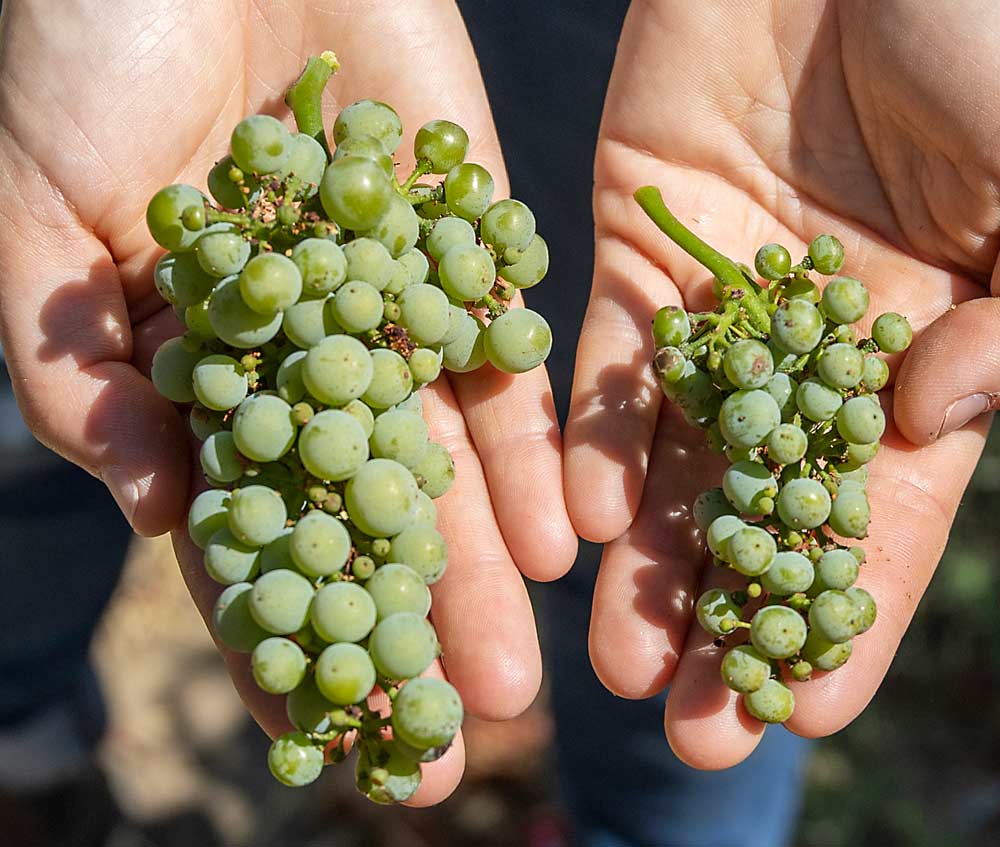
The research team initially focused on better understanding nematode species found in Washington wine grape vineyards and evaluating current control measures. We’ve learned a lot, but mostly that there is no easy, single way to control nematodes. Key findings thus far include:
—The species of concern: Northern root-knot nematode (Meloidogyne hapla) is of most concern because populations can build quickly to overtake young vines in replant situations. Also, as populations build, it can cause chronic vine decline in established vineyards. Dagger nematodes (Xiphinema americanum) are of secondary concern because they can transmit viruses (fanleaf and tobacco ringspot) and are problematic when grapes follow other crops.
—Life cycles: Northern root-knot nematodes have one generation in Washington, survive the winter as mobile J2 (second juvenile stage), their eggs hatch at temperatures below 50 degrees Fahrenheit, and are found mostly in the vine row at depths of 18 inches or less. Populations of the key J2 nematodes spike in late summer to fall. This new understanding of northern root-knot nematodes helps to optimize sample timing and location and better time applications of nematicides.
—Preplant fumigation is effective at reducing dagger nematode populations, but it is only a short-term fix for northern root-knot nematode. After six growing seasons, fumigated plots had the same northern root-knot nematode pressure as nonfumigated plots.
—Post-plant nematicides deliver inconsistent results, likely because timing and application locations aren’t specific enough for Washington vineyards. Control from nematicides for northern root-knot nematodes will always be challenging because they spend much of their life cycle inside roots.
—Nematode-resistant rootstocks are under evaluation in a commercial vineyard that was replanted (Teleki 5C, 101-14 Mtg, 1103 Paulsen and Harmony). Results show differential responses to nematode populations depending on the rootstock, but all four have better vine vegetative growth compared to own-rooted and self-grafted vines, and all four rootstocks support fewer nematodes than own-rooted and self-grafted vines.

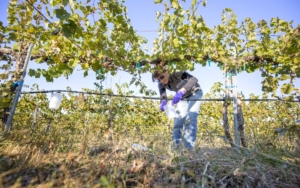
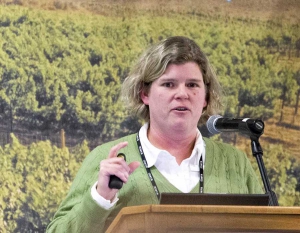
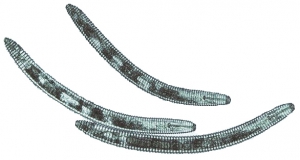





Leave A Comment